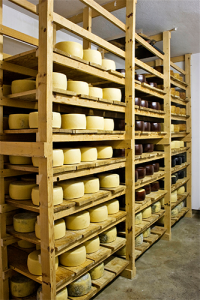BRC Global Standard for Food Safety is a safety and quality certification scheme. It provides a framework for food manufacturers to assist them in the production of safe food and to manage product quality to meet customers’ requirements.

The BRC standard was developed in 1998 by the British Retail Consortium (BRC) to assist retailers in meeting legal food safety obligations and ensure the highest level of consumer protection. Although the BRC food safety standard began in the UK, it is now recognized as a GFSI (Global Food Safety Initiative) benchmarked food safety scheme.
The latest revision of this standard is the BRC Global Standard for Food Safety Issue 7 published January 2015. This standard specifies the food safety, quality, and operational criteria requirements that food manufacturing organizations must fulfill with regard to legal compliance and protection of the consumer. This standard has a series of food safety requirements that must be met from food production to sale to the final consumer. These are:
- A Hazard Analysis and Critical Control Points (HACCP) food safety plan to manage risks by following a step-by-step approach following CODEX Alimentarius guidelines.
- Senior management commitment to provide sufficient resources for achieving the standard.
- A quality management system that details the organizational and managerial policies needed to provide a framework for achieving the standard.
- A series of prerequisite programs dealing with the basic environmental and operational conditions needed for the production of safe food and controlling the generic hazards covered by good manufacturing and good hygiene practices
The BRC Global Standard for Food Safety has been designed to be applicable for any organization regardless of size and geographical location. It is a standard used by suppliers and retailers worldwide.

The BRC Global Standard for Food Safety facilitates standardization of quality, safety, operational criteria and compliance with the legal obligations of manufacturers. It also helps to provide consumer protection. This standard allows organizations to:
- Access to markets where this standard is required
- Report its status to customers who recognize the norm
- Helps meet obligations distributors
- International recognition of your organization on food security and distributor
- Ensuring the supply chain and consumer
- It covers all areas of product safety and legality
- Identifying aspects to vary throughout the life cycle of the product
- Conduct audits combined with ISO 9001 and HACCP standards.
The BRC has developed a range of Global Standards that complement the Food Safety Standard and provide a resource for the auditing and certification suppliers:
- The BRC Global Standard for Packaging and Packaging Materials
- The BRC Global Standard for Consumer Products
- The BRC Global Standard for Agents and Brokers
As mention before, the BRC is a GFSI recognized certification scheme. In this scheme, food businesses are certificated upon completion of a satisfactory audit done by an accredited third party. Companies that successfully obtain a BRC Global Standards certification will ensure their customers have confidence in their food safety program and supply chain management.
ISO Terms Explained

To the novice quality manager, ISO jargon can be extremely overwhelming. What is an NCR? What do you mean by OFI? Are we certified or accredited? But before you go and pull out your hair, let’s take a moment to go over some of the most frequently used terms and their definitions with regards to ISO and Management System Certification.

